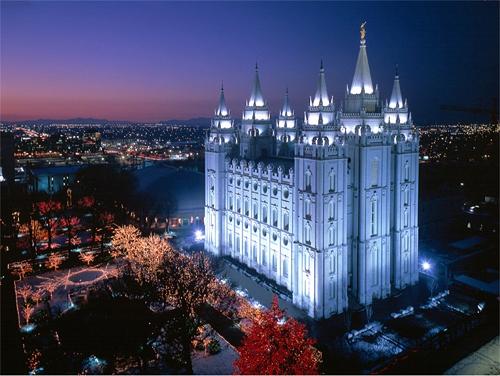Personal Response by Richard Neitzel Holzapfel
Some buildings are used for administrative needs, such as the Mormon Church offices built on every continent. Other buildings are used for the weekday education program of the Mormon Church, including Brigham Young University campuses at Provo, Utah; Rexburg, Idaho; and Laie, Hawaii and the seminary and institute programs that sometime are located near public schools, colleges and universities. Additionally, the Church’s welfare services department constructs a variety of buildings to store and distribute food and goods and to provide employment training as part of the Church’s worldwide humanitarian outreach. The Mormon Church also builds visitors’ centers and museums that preserve the history of the Church so members and nonmembers can learn about its history and beliefs. In seventeen countries, including the Argentina, Brazil, Chile, Columbia, Dominican Republic, England, Ghana, Guatemala, Japan, Korea, Mexico, New Zealand, Peru, Philippians, South Africa, Spain, and United States the Mormon Church built Mission Training Centers (MTC) where Mormon missionaries begin their training, including language education, before dedicating themselves to preach the Gospel full time for eighteen, twenty-four, or thirty-six months.
However, the primary focus of the Mormon Church’s building program is to provide members a place to worship on Sunday. Worship services are generally held in a chapel, a special feature in local church building or meetinhouse. In a chapel, members and interested nonmembers of the Mormon Church gather to worship the Lord through prayer, scripture readings, preaching, singing, and partaking of the sacrament (Lord’s Supper). Additionally, chapels are also used for funeral services that are generally held on weekdays or on Saturday.
Often local Mormon Church buildings include more than a chapel. Such multi-use buildings include classrooms, administrative offices for local lay-leaders (bishop and clerk’s offices), a library, a kitchen, and a cultural hall. Mormons sometimes call these local buildings the “meetinghouse,” “church” or “chapel,” but they generally refer to the building itself instead of some specific section. Most LDS meetinghouses display the Church’s logo, meeting times and a “Visitors Welcome” sign somewhere on the building or on a small marquee in front. Additionally, there is the ubiquitous spire or steeple associated with such buildings that tend to reflect, despite architectural nuances, a sense of familiarity and connectedness no matter where they are found throughout the world.
The classroom part of the local building is used on Sundays for various gospel-centered classes for young people and adults. Additionally, these same classrooms are used during the week for early-morning seminary classes (a weekday religious education program held before the beginning of the local public school day) Boy Scout programs, other youth programs for young men and young women, and other organizations of the Mormon Church. A modest library in the building has material that teachers can use in their lessons, such as visual aids and scriptures.
The cultural hall is often used on Sundays as another teaching station, but its main purpose is for non-Sunday activities, including hosting sporting events sponsored by the Mormon Church; social gatherings such as special dinners for various church organizations; humanitarian service, such as Red Cross sponsored blood drives; cultural art activities, such as plays and talent shows; and wedding receptions. In emergency situations, the Mormon Church opens local buildings to shelter people and as meeting places when a community has special needs during a disaster or tragedy.
In one sense, the local Church meetinghouse is a religious building principally dedicated to Sabbath worship but is also used for social, educational, and community activities during the other days of the week. However, the building is not used for any political purposes such as voting or political party meetings.
Finally, the Mormon Church builds structures of a very special and dedicated nature called temples. The first Mormon temple was dedicated in 1836 in Kirtland, Ohio, USA. Like the biblical temples of Solomon and Herod, which were reserved only for Israelites who were ritually clean, modern temples are reserved for practicing members of the Mormon Church. In temples, Latter-day Saints participate in the most sacred ordinances of the Mormon Church, including temple marriages, which Latter-day Saints believe can survive death into eternity. More than 125 Mormon temples stand around the world so members of the Church can participate in temple worship as often as possible. Between eight and ten temples are in planning or under construction each year.
In areas where the gospel is just beginning to spread the Mormon Church usually leases a space for worship services and in time eventually builds a meetinghouse. Additionally, the Church has developed many multi-use buildings that incorporate various needs. For example, a temple, meetinghouse and seminary and institute space are shared in one building as in New York City or Hong Kong. All Mormon Church buildings are paid for before they are dedicated to the Lord, which usually happens shortly after they are finished, through a general Church building fund so that even in the most economically challenged areas of the world, Saints and their neighbors can enjoy the benefits of having such buildings within reach when they need them. This is one of the distinguishing features of the Church of Jesus Christ of Latter-day Saints.
Additional Resources


